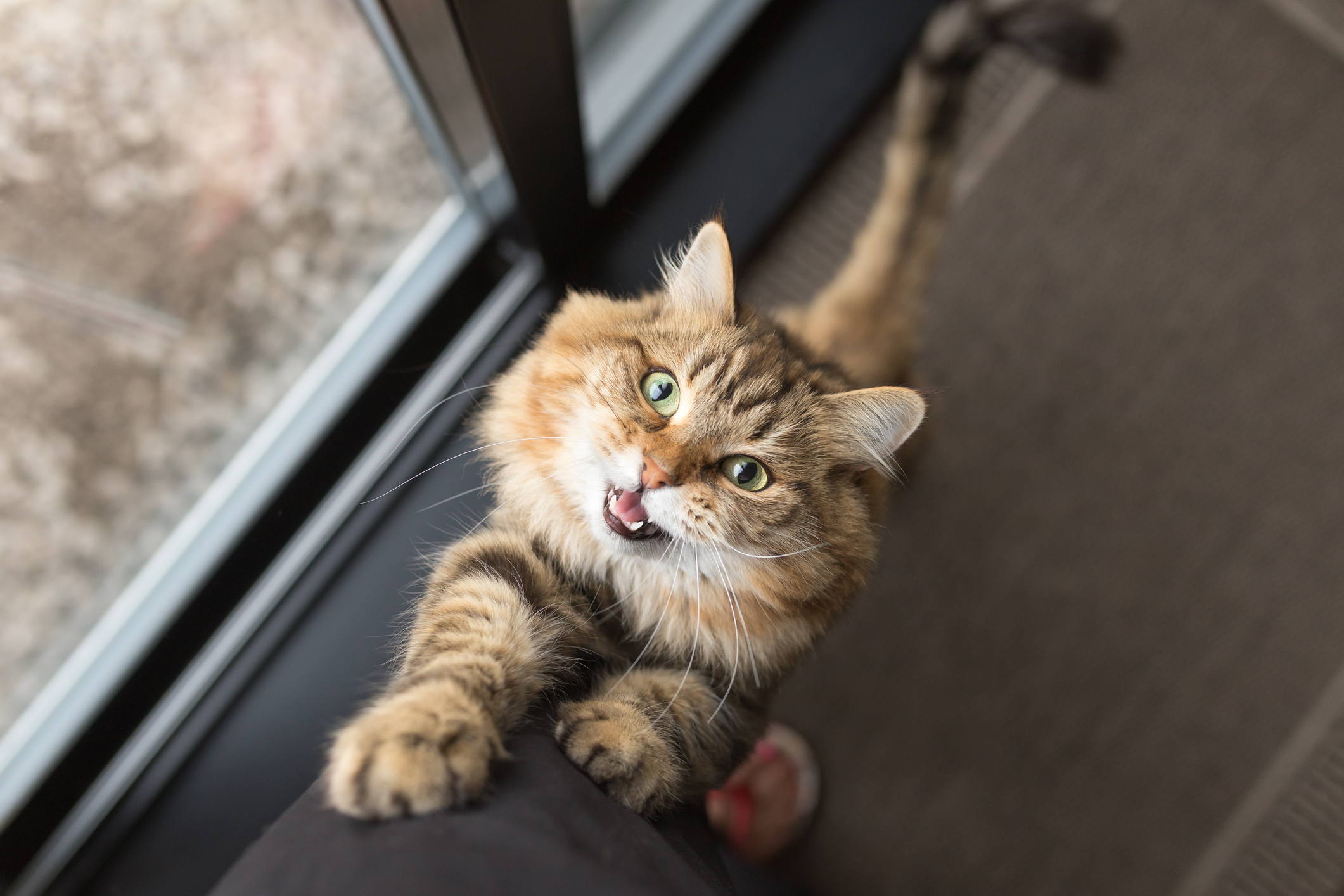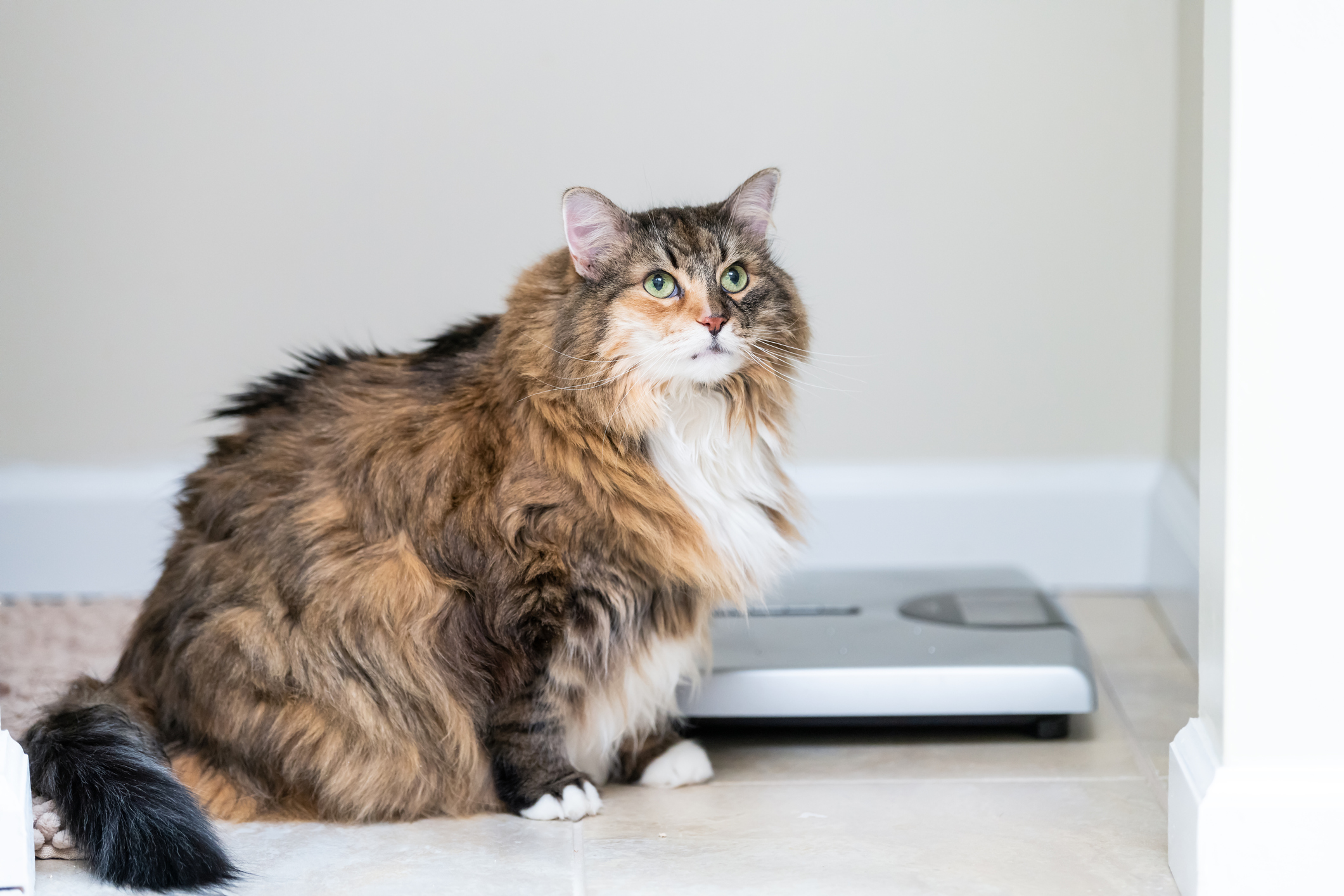
6 Signs Your Cat Has a Thyroid Problem
As humans, we know of a few common thyroid conditions that can plague us as we age. But did you know that our pets can experience these conditions, too?
The thyroid, a small gland in your cat’s neck, produces hormones that help regulate things like metabolism, energy and body temperature. When a tumor or other change affects the amount of thyroid hormones produced, this is considered a thyroid disorder.
In cats, hyperthyroidism is the most common thyroid issue. When a cat suffers from hyperthyroidism, the thyroid gland overproduces these hormones, causing their body to use energy too quickly. Hypothyroidism—reduced levels of thyroid hormone production—can occur in cats, but it is rare.
Hyperthyroidism is most common in older cats. If it is not addressed, hyperthyroidism could lead to secondary health problems like hypertension, heart disease, kidney disease and blindness. Fortunately, thyroid disorders are pretty easy to spot in cats and are also easy to treat once diagnosed.
These six signs can help clue you in to a potential problem with your cat’s thyroid.

- Spike in appetite: A ravenous appetite that develops out of nowhere is one of the most common signs of hyperthyroidism in cats. Because thyroid hormones affect metabolism and energy, a higher level of thyroid hormone in the body causes the cat to feel hungry all the time. Your cat might eat their normal amount of food much faster than usual and then whine or cry for more food throughout the day.
- Rapid weight loss: Another common sign of hyperthyroidism is weight loss. Although your cat might be eating more food faster, the way their body burns off energy rapidly can cause them to lose weight—not gain it. Any time your pet’s weight begins to change without a concentrated effort to alter their nutritional intake should raise some red flags.
- Restlessness: Cats with hyperthyroidism often experience a burst in energy that’s difficult to burn off. They may appear energetic and restless, running around the home and vocalizing more than usual. This is one of the most commonly missed symptoms. For many pet parents, an increase in activity seems positive, not negative, since lethargy is so often a sign of illness. But in this case, the opposite kind of change in your cat’s behavior may indicate a problem.
- Increased thirst: Hyperthyroidism not only affects hunger, but also thirst. The condition can make your cat extremely thirsty, and they will begin to drink more water throughout the day. This also means they will need to urinate more, so you may find yourself scooping the litter box more often in order to keep it clean.
- Poor hair quality: As your cat’s disease progresses, their coat quality may begin to change. Cats with hyperthyroidism tend to stop grooming themselves appropriately. Their hair may begin to look and feel greasy, and longer fur may start to form mats that are difficult to brush out.
- Vomiting and diarrhea: If hyperthyroidism isn’t found and treated in its earliest stages, it can begin to affect your cat in even more ways. Unexplained vomiting and diarrhea are two of the symptoms that might appear once the condition has affected your cat for a while.
Although hypothyroidism is rare in cats, it also pays to know its symptoms, just in case. Essentially, the signs of hypothyroidism are the opposite of those of hyperthyroidism. Your cat might begin to gain weight, sleep more and seem uninterested in playing, develop a dry and dull coat of fur and seek warm places due to a low body temperature.

Once you have identified symptoms of a potential thyroid problem in your cat, seek veterinary help. They will need to run a few tests, including a blood test, to reach a prognosis. From there, you might have a few options for hyperthyroidism treatment, such as surgery, medication and dietary changes. A combination of approaches might be necessary to regulate your cat’s hormones.
Spotting symptoms can provide your cat relief
In both cases of thyroid disorders, your cat’s symptoms are likely to worsen gradually. Their initial signs may be difficult to spot. As the disease progresses, symptoms will become more obvious and detrimental.
In short, it’s important to remember that regular observance of your cat’s behavior, appetite and habits can help you notice changes as soon as they appear. The better you know your cat, the faster you’ll be able to identify symptoms of illness and seek help.


